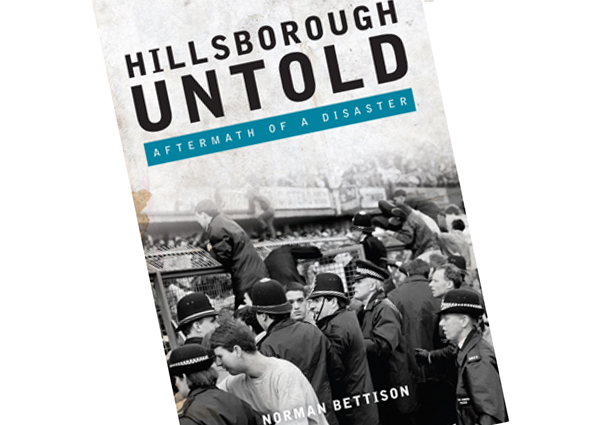The untold story
Sir Norman Bettison has published his account of the Hillsborough tragedy, from witnessing the horror first hand to the still ongoing criminal investigations, including new details of what went on in the aftermath of the disaster.
Sir Norman Bettison has published his account of the Hillsborough tragedy, from witnessing the horror first hand to the still ongoing criminal investigations, including new details of what went on in the aftermath of the disaster.
Twenty-seven years have passed and no one has asked Sir Norman Bettison the man who symbolises the now accepted narrative of a cover-up over Hillsborough, what he saw on that fateful day on April 15, 1989.
Not even the inquests at which he gave testimony, inquests inquiring into the cause of death of the 96 victims.
Sir Norman Bettison publishes his account today (November 17) in Hillsborough Untold, knowing it will be pored over for any suggestion from him that Liverpool supporters were to blame for the crush on the terraces.
Police Professional can reveal that the book makes no such claim, aside from a brief mention of evidence given by Merseyside Police mounted officers who witnessed a number not helping the situation.
Sir Norman gets to finally say how he went from spectator to witness, to become involved in the recovery exercise and then part of the Wain team that submitted evidence to lawyers acting for the force, for which he has been labelled part of a black propaganda unit.
When, at the latest inquests, he began to be questioned on what he saw on that spring day, the coroner directed the barristers contribution away from the event itself.
Sir Norman begins the book by describing how he came to have a seat at the Liverpool v Nottingham Forest FA Cup semi-final and talks of the moment his emergency procedure training kicked in, and eventually witnessing the identification of victims as they lay in vast rows in the temporary mortuary.
It is extremely surprising his account has never been sought by any inquiry before.
South Yorkshire Police has since been accused, using parliamentary privilege, of being rotten to the core for its alleged portrayal of supporters behaviour.
In 12 days leading up to Lord Justice Taylors inquiry, remarkably held just one month after the tragedy, Sir Norman explains how a team of officers under Chief Superintendent Terry Wain gathered officers accounts.
A major aspect of then Chief Inspector Bettisons junior management role in the team was to summarise 81 accounts selected to provide the most objective evidence. He describes this summary and what was to become known as the Wain Report as internal assessments commissioned by lawyers. However, he claims they show that no blame was being put onto the fans.
In his summary, under the heading Behaviour of supporters, Sir Norman says any reports of unruly behaviour was limited to a relatively small minority of spectators.
He claims not to have witnessed any accounts being altered but they were an analysis of the evidence that officers were able to give and not an attempt to put blame onto fans. They contained expressions of emotion and intemperate language not the basis of statements for the purpose of an investigation.
Sir Norman explains the process that was initiated by lawyers to make the accounts suitable for the purpose they were to be used, removing matters of opinion, for example.
He went on to become one of the most senior police officers in the country, including a spell as chief constable of Merseyside Police, an appointment that was almost prevented when local MP Maria Eagle first denounced the Wain team as a black propaganda unit using parliamentary privilege.
Later, as chief constable of West Yorkshire Police, the accusations over Sir Normans role after the disaster resurfaced with the publication of the Hillsborough Independent Panels 2012 report.
It led to a referral to the Independent Police Complaints Commission (IPCC) and eventually to his early resignation. The book details the political wrangling that led to the police authority to call for him to step down, in an attempt to head off controversy ahead of police and crime commissioner elections.
He deals with the several accusatio


